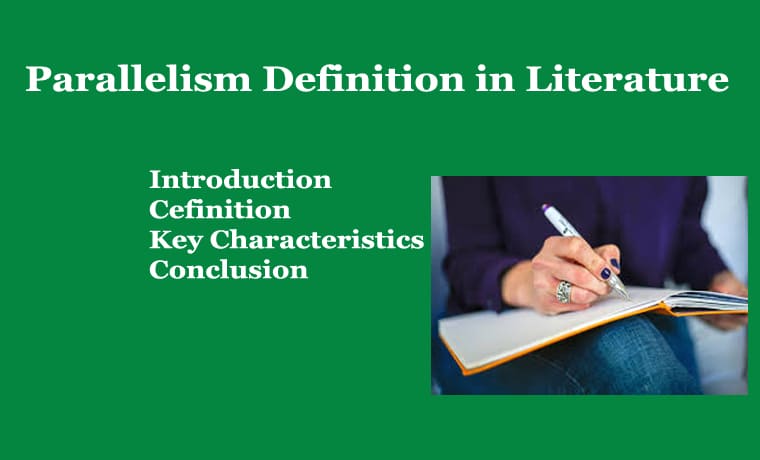Parallelism Definition in Literature
Parallelism Definition in Literature
Table of Contents
Parallelism Definition in Literature
Parallelism Definition in Literature: An Introduction:
Parallelism is a rhetorical and literary device that involves the repetition of grammatical structures, sounds, or syntactical patterns in a series of words, phrases, or clauses. This deliberate repetition creates a sense of symmetry, rhythm, and balance, enhancing the overall coherence and impact of the written or spoken expression.
In literature, parallelism is often employed for various purposes, including emphasis, clarity, and aesthetic appeal. Writers use parallel structures to organize ideas, create memorable phrases, and guide the reader through the text with a rhythmic and harmonious flow.
Characteristics of Parallelism in Literature:
Structural Repetition:
Parallelism involves the repetition of grammatical structures. This can include repeating similar syntactical patterns, such as using the same grammatical form for a series of phrases or clauses.
Example: “She likes hiking, swimming, and cycling.”
Semantic Parallelism:
Parallelism can also involve the repetition of similar meanings or ideas. This is often used to emphasize key concepts and create a sense of balance in the expression.
Example: “The cat gracefully leapt onto the table, and the dog energetically followed suit.”
Sound Parallelism:
Beyond grammatical and semantic repetition, parallelism may extend to the repetition of sounds, creating a pleasing auditory effect.
Example: “Easy come, easy go.”
Uses of Parallelism in Literature:
Emphasis:
Parallel structures highlight key ideas or concepts, emphasizing their importance and making them more memorable for the reader.
Example: “To err is human; to forgive, divine.”
Clarity:
Parallelism enhances clarity by organizing ideas in a systematic and easily understandable manner, allowing readers to follow the author’s argument or narrative more effectively.
Example: “The teacher asked the students to read, to write, and to discuss the assigned topics.”
Aesthetic Appeal:
Parallelism contributes to the overall aesthetic quality of a literary work, creating a rhythmic and harmonious flow that engages the reader.
Example: “The sun set in a blaze of color, painting the sky with hues of red, orange, and pink.”
Conclusion:
In summary, parallelism in literature is a versatile and powerful literary device that writers employ for structural, semantic, and auditory purposes. Whether used for emphasis, clarity, or aesthetic appeal, parallelism adds depth and coherence to the written word, leaving a lasting impression on the reader. 0 0 0. Parallelism Definition in Literature
Parallelism Definition in Literature
Articles on Literature:













